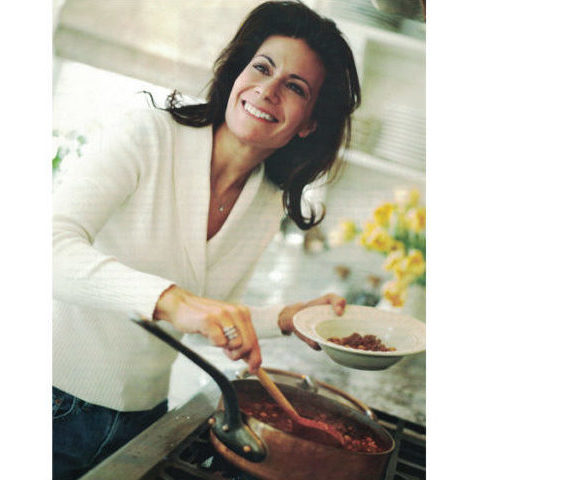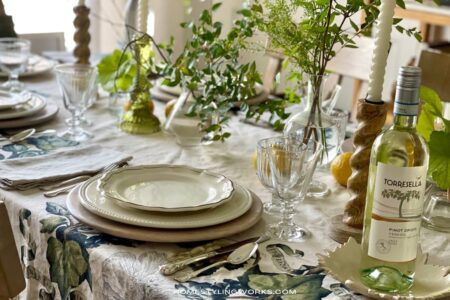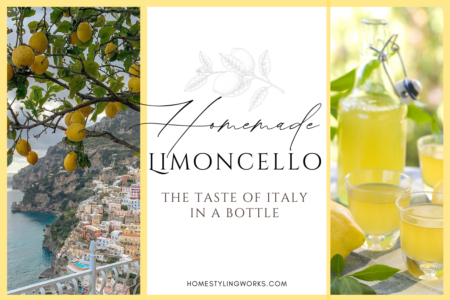Tried & True: Cookbooks That Taught Me How To Cook
Another regular monthly feature of the Home Styling Works website will be my “Tried & True” series, highlighting my favorite things in home styling, gardening and the kitchen arts.
So, what is “tried and true”?
Tried-and-true, adjective. Proven good, desirable, or feasible: shown or known to be worthy
In a nutshell, I’m going to share with you my personal, time-tested, Donna-approved things that have worked for me in the past (and that I continue to use to this day).
Cooking has been my passion for many years, so I’m going to begin with “Tried & True: The Cookbook Edition”. This post is about Cookbooks That Taught Me How To Cook.
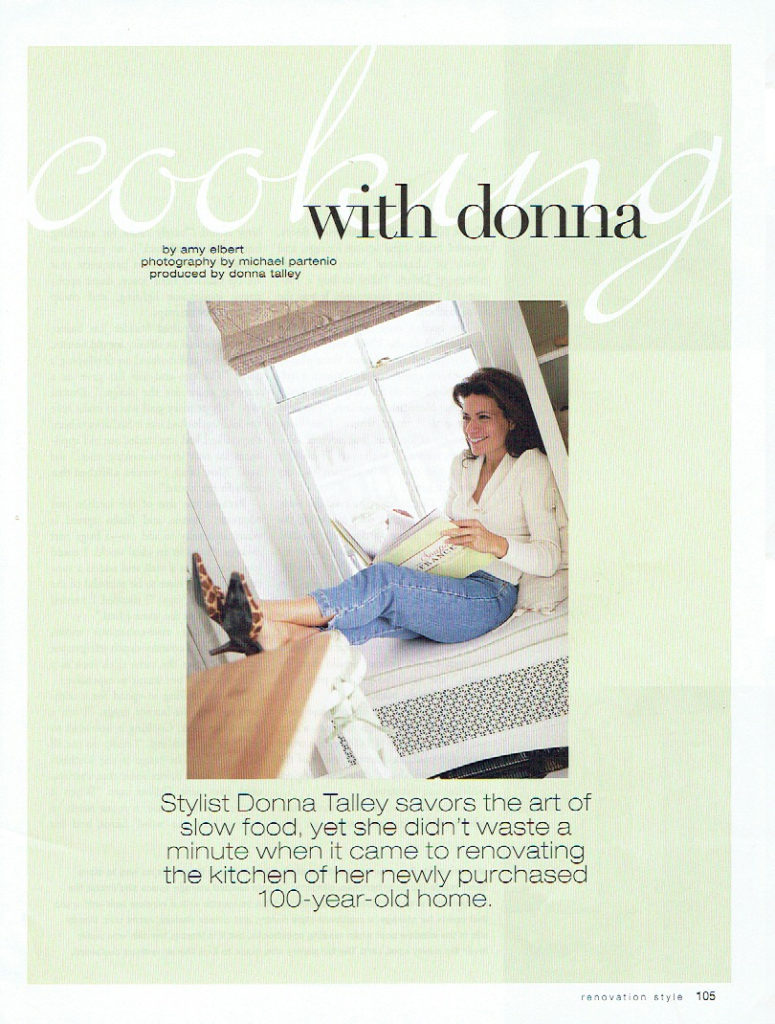
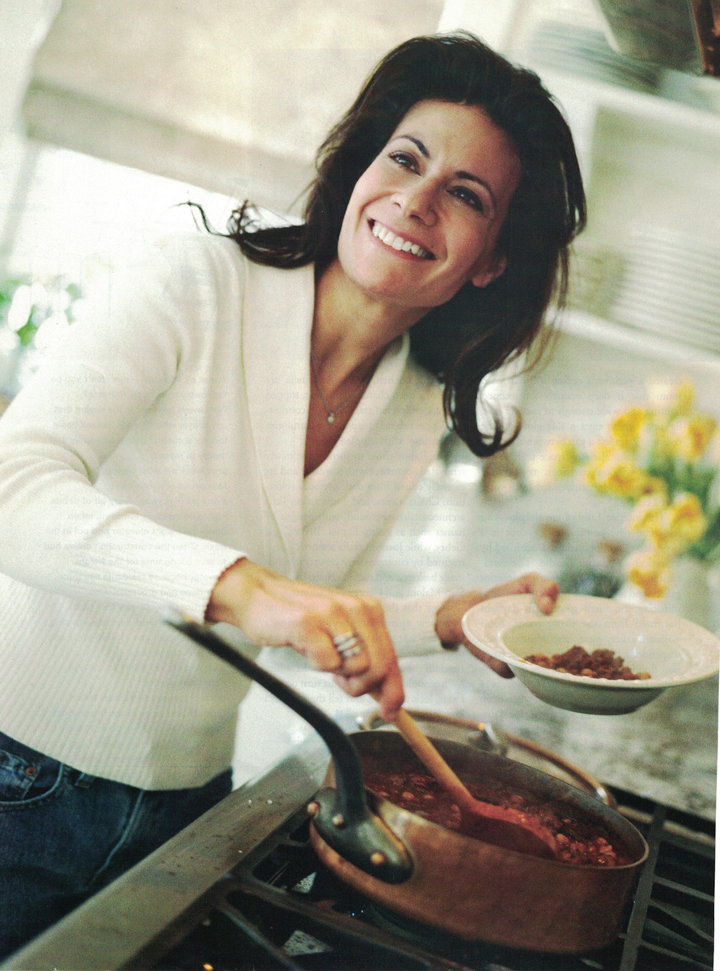
I didn’t start out as “Cooking With Donna” (above – Renovation Style magazine, Fall 2005 feature). As with most things, my love of cooking was an evolutionary process. In my days as a magazine story producer, the editors also discovered that I loved to cook, which led to several national magazine features (I’ll share more of those in upcoming posts).
But back to my cooking evolution.
When I was growing up in suburban Chicago, I learned how to cook by watching my first-generation Italian-American mother make the staples she learned from my Sicilian grandmother – you know, meatballs, Sunday gravy, lasagna, manicotti, stuffed shells, Sicilian pizza, lemon cookies, honey cookies…. you get the idea. The healthy stuff, haha. Oh wait, there was one healthy item: Escarole and Beans (or, as my mother and grandmother put it: Ska-dawl ‘n’ Beans),
But I digress.
When I moved to New York City in my early twenties, I realized I needed to branch out beyond the Italian-American culinary realm and learn how to cook other things – one, to expand my cooking horizons, and two, to keep my waistline from expanding!
One thing I did know back then was that I truly enjoyed cooking – despite my diminutive Manhattan and Brooklyn apartment kitchens.
“The Silver Palate Cookbook”, published in 1982, was my first REAL cookbook. It was a bestseller and a staple in anyone’s kitchen in the 1980’s who wanted to learn how to cook. And cook well.
I love the “over the fence” narrative style, with authors Sheila Lukins and Julee Rosso (co-owners of the popular and eponymous gourmet store on the Upper West Side of Manhattan) sharing anecdotes and tips about each recipe. Also, there were little drawings and no photos. This cookbook also introduced me to cooking beyond my Italian roots – exploring Mediterranean and Spanish cuisine, and even American Regional cooking. My favorite recipes I turned to were the Chicken Marbella and Chili For A Crowd (still fabulous to this day for make-ahead entertaining). In fact, my 20-year-old copy was so dog-eared and stained after years of use that I finally bit the bullet and bought a new copy.

In 1989, the same authors followed up with “The New Basics Cookbook”, which was invaluable to me on my kitchen journey. This book spells out the basics – everything from how to boil an egg to making homemade chicken stock (it’s not that difficult – really!!) The book also explains ingredients and pantry staples and why quality matters. This was in the early days of previously-unheard-of ingredients such as balsamic vinegar, capers & Dijon mustard. This timeless and essential cookbook would make a great wedding shower or first-apartment gift.
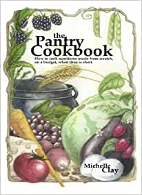
My next choice is a cookbook I discovered when I moved from NYC to upstate New York in the early 1990s, where my kitchen had a pantry (something unheard of in my apartment kitchens!) I found “The Pantry Cookbook” by Michelle Clay in 1993 at the Barnes & Noble bookstore in Albany, NY. The cookbook was reprinted in 2011, and with good reason. This book showed me how to properly stock (and cook from) your pantry – everything from spices to legumes and pasta. The front of the book lists key pantry ingredients (and an explanation for why you need them), and the cookbook shows you simple, nutritious recipes using pantry ingredients. This was my cooking bible that taught me many valuable lessons.

If you want to take pantry cooking one step further, another favorite is “My Pantry: Homemade Ingredients That Make Simple Meals Your Own: A Cookbook”, written by the founder of the modern farm-to-table movement, Alice Waters. She co-wrote this book with her daughter, Fanny Singer. Although this is a newer cookbook (published in 2015), it should also be a mainstay for beginning cooks who want to learn how to make impromptu meals using pantry ingredients.

Another cookbook that was a staple in my cooking arsenal is the aptly titled “How To Cook Everything” by Mark Bittman (who was the food writer for The New York Times for many years). What I still find so helpful about his cookbook is the layout – you simply look up an ingredient and he gives you several recipe options. For example, say you found some beautiful eggplant at the farmer’s market. No problem – just look it up and you’ll find everything from Roasted Eggplant Dip to Eggplant Parmesan. He also delves into different cooking techniques such as braising, roasting, baking, frying, etc. This is really a one-stop cooking reference that is now in its 20th year – and still remains relevant and timeless.

As a former “city girl” living in a cottage in Old Chatham, NY, I first discovered the joys of gardening. When I moved to Saratoga Springs, NY in the late 1990s, I planted an herb garden with the usual suspects (parsley, sage, rosemary & thyme, and one kind of basil). Then I found this fabulous cookbook, “Recipes From A French Herb Garden” by Geraldene Holt, which taught me how to cook with what I grew. It also inspired me to add more unusual herbs to my garden, such as chervil, bay leaf, lemongrass, golden oregano, dill, lemon verbena, purple & variegated basil, garlic chives, French tarragon, and even edible flowers,
I strongly feel that cooking and gardening – both creative pursuits – are inextricably linked. There is something profound and humbling about growing things you’re cooking with. This cookbook helped me to determine which herbs are best to cook with (rosemary, thyme, bay leaf) and which tender ones are best to finish a dish with (basil, parsley, chervil, chives). I feel transported to France every time I open it.
In my next post, I’m going to talk about COOKBOOKS THAT BROUGHT MY COOKING TO THE NEXT LEVEL.

